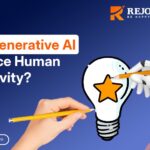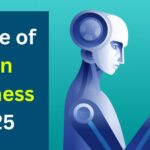Introduction
What Are AI Development Services?
Artificial Intelligence (AI) development services refer to the wide range of professional offerings that help businesses build, deploy, and maintain intelligent systems. These services are designed to simulate human-like intelligence in machines, empowering businesses to automate complex processes, draw insights from data, and create smarter products. In simpler terms, AI development services are the bridge that connects raw computing power to intelligent business outcomes.
AI development services range from early consulting and strategy planning to full-scale AI model implementation and post-launch support. These services frequently involve the creation and training of machine learning models, the development of natural language processing applications, the integration of AI into mobile or online apps, and even help for IoT and robotics projects.
One of the key reasons companies turn to AI development services is the sheer complexity of implementing AI solutions in-house. These services offer access to AI experts, data scientists, engineers, and domain specialists who can help transform a concept into a working intelligent system. Whether it’s developing a smart chatbot for customer service or creating an algorithm that predicts user behavior, AI development services are essential for businesses aiming to lead in the digital era.
Why AI Is Transforming Every Industry
It’s no secret—AI is revolutionizing the way industries operate. From healthcare to finance, manufacturing to marketing, every sector is experiencing the seismic shift brought about by artificial intelligence. But what’s really behind this massive transformation?
For starters, AI enables a level of data analysis and decision-making that was previously unimaginable. In healthcare, AI systems can analyze thousands of patient records in seconds, helping doctors make more accurate diagnoses. In finance, algorithms can detect fraudulent transactions in real-time. In retail, AI personalizes the shopping experience for every customer, driving sales and improving customer satisfaction.
AI’s transformative power lies in its ability to learn and improve over time. Unlike traditional software, which performs tasks based on fixed programming, AI models adapt, evolve, and become more efficient the more data they process. This creates a feedback loop where systems constantly get better at what they do, leading to exponential improvements in performance and value.
Moreover, businesses are under immense pressure to stay competitive. Embracing AI isn’t just about keeping up—it’s about gaining a strategic edge. Companies that successfully integrate AI into their operations can lower costs, boost productivity, and unlock new revenue streams.
Key Components of AI Development
Machine Learning (ML)
Machine Learning is arguably the backbone of most AI systems. It involves training algorithms to recognize patterns in data and make decisions or predictions based on that data. ML is used in applications ranging from spam filters in your email to recommendation engines on Netflix.
What makes ML so powerful is its adaptability. Unlike static programming, ML algorithms learn from historical data and apply that knowledge to new situations. Over time, they can fine-tune their performance, improving accuracy and efficiency without human intervention.
For example, in eCommerce, ML can analyze customer purchase history and suggest products they are likely to buy. In finance, it can predict market trends based on past data. In healthcare, it helps identify disease patterns and recommend treatments.
Supervised vs Unsupervised Learning
There are two major types of machine learning: supervised and unsupervised learning.
- Supervised Learning: In this method, the algorithm is trained using labeled data. For example, if you’re trying to teach a model to identify cats in images, you’ll feed it thousands of pictures labeled as “cat” or “not cat.” The algorithm learns from this input and begins to make accurate classifications.
- Unsupervised Learning: Here, the model works with unlabeled data. The goal is to uncover hidden patterns or groupings in the data. This is particularly useful in customer segmentation, anomaly detection, or discovering natural clusters within datasets.
Each method has its own use cases, and the choice depends on the type and quality of data you have, as well as your specific goals.
Natural Language Processing (NLP)
NLP is the technology behind voice assistants, chatbots, sentiment analysis tools, and machine translation systems. It enables machines to understand, interpret, and generate human language in a meaningful way.
Imagine asking Siri for the weather or chatting with a support bot about your delivery status—that’s NLP in action. It deciphers human language, identifies context, and formulates appropriate responses.
The power of NLP extends far beyond simple commands. Businesses use NLP for customer feedback analysis, document classification, automated report generation, and even legal contract review. With advances like transformer-based models (like BERT and GPT), NLP is becoming more accurate, nuanced, and capable of understanding complex human interactions.
What’s more exciting is that NLP models are now being trained to understand tone, sarcasm, and cultural context—making human-machine communication more natural than ever.
Computer Vision
Computer Vision is another core aspect of AI development, focused on enabling machines to interpret and understand the visual world. It’s used in applications like facial recognition, medical imaging, quality inspection in manufacturing, and autonomous vehicles.
In layman’s terms, computer vision allows machines to “see” and process visual information the same way humans do—but often faster and with greater precision. For example, in the automotive industry, computer vision helps self-driving cars detect pedestrians, traffic lights, and road signs in real time.
Healthcare is another area reaping massive benefits. Radiologists are using computer vision to detect tumors and anomalies in X-rays and MRIs with incredible accuracy. Meanwhile, in retail, it helps with inventory tracking through automated image recognition.
What sets computer vision apart is its scalability. Once trained, a model can process thousands of images or video feeds simultaneously, making it a powerful tool for automation and analysis in data-rich environments.
Robotics Process Automation (RPA)
Robotic Process Automation, or RPA, may not be the flashiest part of AI, but it’s one of the most impactful—especially in industries burdened by repetitive, rule-based tasks. RPA uses software robots (often called “bots”) to mimic human actions within digital systems. Think of it like a virtual assistant that never sleeps, never makes mistakes, and never asks for a vacation.
These bots can perform tasks such as data entry, invoice processing, email responses, and CRM updates. Anywhere there’s a standardized digital workflow—RPA can likely handle it. What makes RPA even more powerful is when it’s combined with AI to create what’s called “Intelligent Automation.” That means bots not only follow rules but also learn from data, make decisions, and even interact with customers using NLP.
Businesses in finance, healthcare, insurance, and logistics are heavy adopters of RPA. Why? Because it reduces operational costs, speeds up processes, and frees up human workers to focus on high-value tasks. For example, a claims processing company can cut claim approval times from days to minutes with RPA.
The ROI is rapid and measurable. Companies often see significant savings within the first few months of implementation. Plus, it’s scalable. You can start with just a few bots and expand across departments as needs grow. For any business aiming to become leaner and more agile, RPA is no longer optional—it’s essential.
AI-Powered Predictive Analytics
Predictive analytics is the crystal ball of AI. It uses historical data, machine learning algorithms, and statistical techniques to predict future outcomes. And it’s transforming decision-making across every sector.
Whether it’s forecasting sales, predicting churn, or anticipating equipment failures, AI-powered predictive analytics gives businesses a proactive edge. Instead of reacting to problems, organizations can now prevent them.
For example, in the telecom industry, companies use predictive models to identify customers who are likely to cancel their service—and take action before it happens. In manufacturing, predictive maintenance can reduce equipment downtime by identifying parts likely to fail before they do. In marketing, it can pinpoint which leads are most likely to convert, optimizing ad spend.
What sets AI-driven predictive analytics apart from traditional analytics is its ability to handle vast volumes of data and find complex patterns that humans simply can’t detect. It’s not just about analyzing what has happened—it’s about making confident decisions about what will happen next.
The accuracy of these models improves over time, especially when paired with real-time data. That’s why businesses are increasingly embedding predictive analytics into their core systems, dashboards, and workflows. It’s fast becoming a must-have tool for any organization aiming to outpace competitors in a data-driven world.
Benefits of AI Development Services
Enhanced Decision-Making Capabilities
AI is revolutionizing decision-making—and not just for Fortune 500 companies. With AI development services, even small businesses can access the kind of real-time, data-backed intelligence that was once out of reach.
At the heart of it, AI enhances decisions by eliminating guesswork. Through data analysis, pattern recognition, and predictive modeling, AI tools offer insights that help organizations make better choices faster. Imagine having a digital advisor that analyzes thousands of variables instantly and tells you the best course of action.
For instance, AI can analyze customer behavior data to help marketing teams launch more effective campaigns. In finance, AI helps assess credit risks more accurately. In retail, it can help optimize inventory based on seasonal trends and buying patterns.
The biggest game-changer? Speed. Traditional decision-making processes can take weeks or even months. AI cuts that down to minutes or seconds—giving businesses the agility to act quickly and stay ahead of the curve. And let’s not forget about accuracy. By removing human bias and relying on data, AI-based decisions are more objective and consistent.
But it’s not just about crunching numbers. AI development services often include dashboards, reports, and visualizations that make complex insights easy to understand and act on. So, whether you’re a startup founder or a corporate executive, AI equips you with the tools to make smarter decisions every day.
Automating Repetitive Tasks
Let’s face it—no one enjoys spending hours on tedious, repetitive tasks. That’s where AI steps in, not just to help, but to take over those tasks entirely.
From data entry and invoice processing to email categorization and customer support, AI is freeing up human workers like never before. And the benefits aren’t just in time savings. Automation also reduces errors, increases speed, and ensures tasks are done consistently.
Imagine you’re running a small eCommerce store. You could spend hours manually updating stock levels, processing orders, and responding to customer queries. Or, you could integrate AI systems that handle these tasks in the background while you focus on growing your business.
Larger enterprises see even greater benefits. HR departments are using AI to automate resume screening. Finance teams are leveraging bots for reconciliations and report generation. Customer support centers are deploying AI-powered chatbots that handle 80% of inquiries without human intervention.
The beauty of AI automation is its scalability. Start small—perhaps with an automated chatbot or invoice processor. Then, as you identify more bottlenecks, expand your automation capabilities. Over time, the efficiency gains are not just noticeable—they’re transformative.
Automation doesn’t mean eliminating human jobs—it means augmenting them. By letting machines handle the mundane, your team is free to focus on innovation, strategy, and tasks that truly require the human touch.
Personalization and Customer Experience
In the age of information overload, customers crave experiences that feel tailored just for them. That’s exactly what AI-powered personalization delivers—and it’s changing the way businesses interact with their audiences.
AI development services make it possible to create highly customized experiences by analyzing user data in real time. This data includes browsing habits, purchase history, demographics, social interactions, and more. The result? Hyper-personalized content, offers, product recommendations, and customer journeys that feel uniquely curated for each user.
Let’s take Netflix and Amazon as prime examples. Netflix’s AI recommends shows and movies based on your past viewing behavior, while Amazon shows you products you’re most likely to buy—often before you even know you want them. These aren’t random guesses. They’re the result of complex AI algorithms that learn and adapt with each interaction.
But personalization isn’t just for tech giants. With the right AI development partner, even small businesses can integrate similar systems into their websites, apps, and customer communication platforms. Whether it’s dynamic email campaigns, personalized push notifications, or real-time product recommendations—AI makes it all possible.
Beyond increasing conversions, personalization builds brand loyalty. When customers feel understood, they’re more likely to return, engage, and advocate for your brand. AI allows you to build those meaningful, one-to-one relationships at scale—something that was nearly impossible just a few years ago.
Types of AI Development Services
AI Consulting Services
The journey into AI can be daunting, especially for organizations that lack in-house expertise. That’s where AI consulting services come in—they help businesses understand, plan, and strategize their AI initiatives before writing a single line of code.
AI consultants assess your current technology landscape, identify opportunities where AI can bring value, and map out a detailed implementation roadmap. They help define clear use cases, estimate ROI, select the right tools and platforms, and even help with change management and staff training.
For example, a logistics company may know they want to optimize delivery routes but have no idea how to apply AI to solve the problem. A consultant would analyze their operations, suggest the best AI approach (e.g., route optimization using machine learning and geospatial analysis), and guide them through pilot programs and scaling.
The best part? AI consultants bring a fresh, objective perspective. They’ve likely worked across various industries and know the pitfalls to avoid. They help businesses avoid costly mistakes, ensure compliance, and design scalable, future-proof solutions.
If you’re just starting with AI or considering a major transformation, consulting services are the best first step. They make sure you’re investing wisely and getting the most out of your AI initiatives.
Custom AI Software Development
Off-the-shelf AI tools are great, but they often lack the flexibility or specificity that businesses need. That’s where custom AI software development shines. It’s tailored, powerful, and built specifically around your goals.
Custom AI development services involve designing, developing, training, and deploying unique AI solutions from the ground up. Whether it’s a predictive analytics platform for retail forecasting, a facial recognition system for secure access, or a chatbot with deep domain expertise—custom AI solutions are built to fit your exact needs.
Unlike generic platforms, these solutions integrate seamlessly with your existing systems, workflows, and databases. They’re designed to handle your specific data sets, user scenarios, and performance expectations.
The process usually starts with data collection and analysis, followed by model selection, training, testing, and finally deployment. Post-deployment support is also crucial, as AI systems need continuous monitoring and updates to maintain accuracy and effectiveness.
Yes, it takes more time and investment than using pre-built tools—but the payoff is huge. You get a solution that’s fine-tuned for your business and offers a competitive edge that’s hard to replicate.
AI Integration with Existing Systems
One of the biggest challenges in adopting AI is integrating it with your existing tech stack. Legacy systems, outdated databases, and siloed applications can make this a complex task. But with the right AI integration services, it becomes manageable—and highly rewarding.
AI integration means embedding intelligent features into your current software and platforms. It might involve integrating a machine learning model into your CRM to predict customer behavior, or adding a voice assistant to your mobile app. It could even be as simple as linking a chatbot to your website for automated support.
Integration services often include data cleaning and preparation, API development, middleware configuration, and backend adjustments. They also ensure that AI components communicate smoothly with your existing tools without disrupting operations.
The benefit? You get smarter systems without having to rebuild everything from scratch. Your CRM becomes predictive. Your ERP becomes self-learning. Your customer service becomes 24/7 and multilingual.
AI integration services also focus on scalability. As your business grows and your data expands, the integrated systems can adapt and scale accordingly—ensuring long-term performance and value.
AI Maintenance and Support
Developing an AI system is just the beginning. To keep it running at peak performance, you need ongoing maintenance and support. AI models can drift over time, meaning their predictions become less accurate as the data environment changes. That’s why continuous updates, monitoring, and performance tuning are essential.
AI maintenance services ensure that your models stay relevant and effective. This includes regular retraining, algorithm updates, security patches, and performance audits. It also involves managing data pipelines, troubleshooting errors, and adapting the system to new business requirements.
Think of it like taking care of a high-performance car. Without regular maintenance, even the most powerful engine will eventually falter. The same goes for AI. Without support, even the smartest model will lose its edge.
Good AI support also includes user feedback loops. This means collecting real-world user data to refine and improve the model over time. It ensures your AI solution continues to evolve with your business needs, market trends, and customer behavior.
Bottom line: AI isn’t a “set it and forget it” solution. It’s a living system that needs nurturing. With professional maintenance and support, you protect your investment and maximize your returns.
How to Choose the Right AI Development Partner
Evaluate Technical Expertise and Experience
Choosing the right AI development partner can make or break your project. One of the first things you should evaluate is their technical expertise. This goes beyond buzzwords—look for real-world projects, case studies, and a proven ability to deliver complex AI solutions.
You want a team that understands machine learning algorithms, deep learning frameworks (like TensorFlow or PyTorch), natural language processing, computer vision, and data engineering. Ask about their experience with technologies like OpenAI, GPT models, BERT, or other foundational AI architectures.
It’s not just about the tools, though—it’s about how they use them. Do they understand how to align AI development with your business goals? Can they explain complex systems in a way that your non-technical stakeholders can understand? Technical brilliance is only valuable if it translates into real business impact.
Another important aspect is their ability to scale. AI isn’t a one-off project—it evolves. You need a team that can grow with you, adding new features, models, and capabilities over time.
Ask about their past clients and projects. Did they deliver on time? What kind of results were achieved? Do they have client testimonials or reviews? A reputable partner will be proud to showcase their achievements.
Check Industry-Specific Knowledge
AI isn’t one-size-fits-all. The challenges of implementing AI in healthcare are vastly different from those in retail or finance. That’s why industry-specific experience matters a lot when choosing your development partner.
An AI company that understands your industry will already be familiar with regulatory requirements, common pain points, customer behaviors, and data formats. They’ll know how to navigate challenges like HIPAA compliance in healthcare or data security in fintech.
For example, in the automotive industry, your AI development partner should understand telematics data, autonomous driving systems, and real-time analytics. In eCommerce, they should know how to build recommendation engines and optimize customer journeys. In logistics, they should be well-versed in route optimization, inventory forecasting, and warehouse automation.
This domain knowledge speeds up development, reduces risk, and ensures that the AI solution they build solves your problems. It also leads to more innovative ideas, as they can bring insights from previous industry projects.
Don’t hesitate to ask for case studies or specific use cases from your sector. The right partner will not only have the experience but will also be enthusiastic about sharing how they’ve helped similar businesses succeed with AI.
Assess Communication and Support Capabilities
Clear and consistent communication is one of the most underrated aspects of a successful AI project. You might be working with a brilliant development team, but if they can’t communicate their progress, explain technical concepts, or respond promptly to issues—things can quickly go south.
When evaluating potential partners, assess their responsiveness, transparency, and willingness to collaborate. Do they have a structured process for project updates? Will they assign a dedicated project manager or point of contact? Are they willing to use tools like Slack, Jira, or Trello to keep you in the loop?
Support is just as important. Post-deployment maintenance, bug fixes, model retraining, and performance monitoring are essential parts of the AI lifecycle. A good partner won’t disappear after the initial launch. They’ll stick around to help you optimize and improve the system over time.
Also consider time zones, language barriers, and cultural compatibility—especially if you’re working with an offshore team. Choose a partner that fits seamlessly into your workflow and feels like an extension of your own team.
A great AI development partner doesn’t just build solutions—they build relationships. And that starts with solid communication and ongoing support.
Conclusion
Artificial Intelligence development services are no longer a luxury—they’re a necessity for businesses aiming to stay competitive in today’s fast-paced digital world. From machine learning and natural language processing to computer vision and predictive analytics, the possibilities are endless—and the benefits are massive.
By leveraging AI, companies can make smarter decisions, automate mundane tasks, personalize customer experiences, and unlock entirely new revenue streams. But success doesn’t come from plugging in a tool and hoping for the best. It comes from partnering with the right experts who understand your goals, your industry, and the technology inside out.
Whether you’re just exploring AI or ready to scale an existing project, the journey begins with understanding what’s possible and making informed decisions. Choose your AI development partner wisely, and you’ll be setting your business up for long-term success in the age of intelligent automation.
FAQs
1. What is the typical cost of AI development services?
The cost varies significantly based on project complexity, required technologies, and the team’s expertise. Simple AI models might cost a few thousand dollars, while enterprise-level custom AI solutions can range from $50,000 to several hundred thousand.
2. How long does it take to develop an AI solution?
Project timelines vary, but on average, it can take 3 to 6 months for a moderately complex AI system. More advanced solutions, such as those involving deep learning or large datasets, may take 9 to 12 months or longer.
3. Can AI be integrated with existing business systems?
Yes, AI can be seamlessly integrated into your current systems such as CRMs, ERPs, or custom applications. Professional AI development services specialize in building APIs and middleware to ensure smooth data flow and functionality.
4. Is AI suitable for small businesses?
Absolutely. AI isn’t just for tech giants. Small businesses can use AI for tasks like customer service automation, personalized marketing, and predictive analytics—often through cost-effective, scalable solutions.
5. What is the biggest challenge in AI implementation?
The biggest challenges include data quality, lack of skilled talent, integration with legacy systems, and change management. That’s why working with a knowledgeable AI development partner is critical to overcoming these hurdles.
- Artificial Intelligence Development Services
- AI development services range from early consulting and strategy planning to full-scale AI model implementation and post-launch support.
- AI development services
Related posts:
 Can Generative AI Truly Replace Human Creativity in the Future?
Can Generative AI Truly Replace Human Creativity in the Future?
 Blurring Boundaries: How AI is Reshaping the Future of Digital Art?
Blurring Boundaries: How AI is Reshaping the Future of Digital Art?
 Smart Contracts 2.0: The Next Evolution in Blockchain Technology
Smart Contracts 2.0: The Next Evolution in Blockchain Technology
 Exploring Coderway.net: A Modern Gateway to AI-Powered Image Creation
Exploring Coderway.net: A Modern Gateway to AI-Powered Image Creation
 The Future of AI in Business: Predictions for 2025 and Beyond
The Future of AI in Business: Predictions for 2025 and Beyond
 Understanding AI Inference as a Service: How It Powers Smart Applications
Understanding AI Inference as a Service: How It Powers Smart Applications
 The Role of AI Model Libraries and Vector Databases in Modern AI Deployment
The Role of AI Model Libraries and Vector Databases in Modern AI Deployment
 Revolutionizing App Development in Dubai with AI-Powered Custom Solutions
Revolutionizing App Development in Dubai with AI-Powered Custom Solutions







